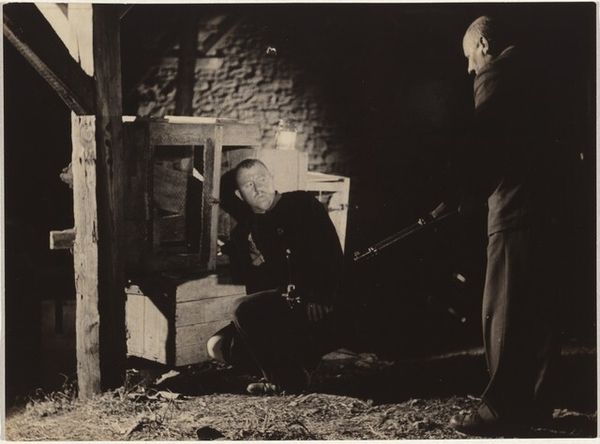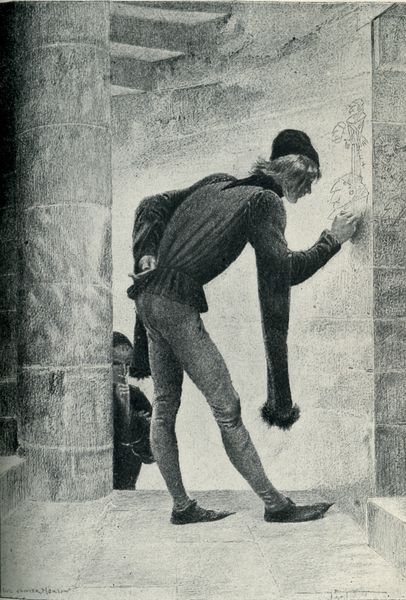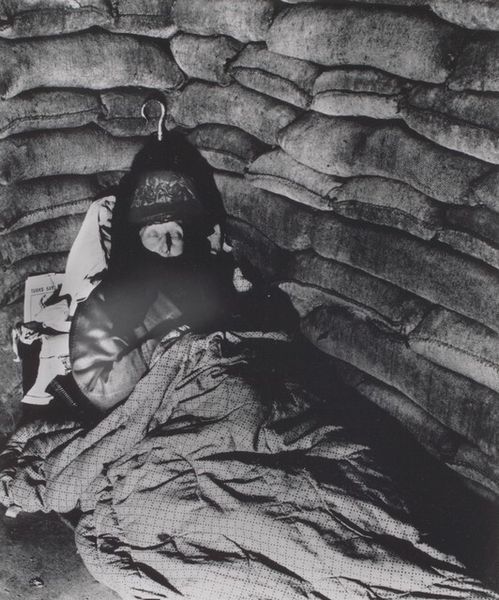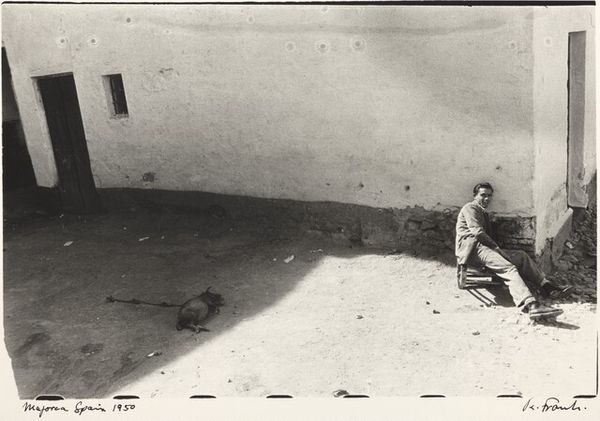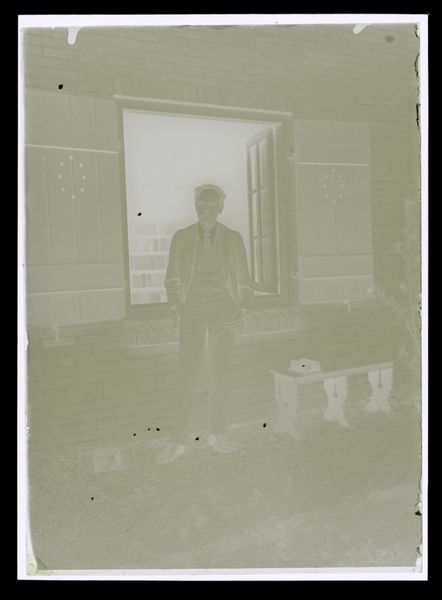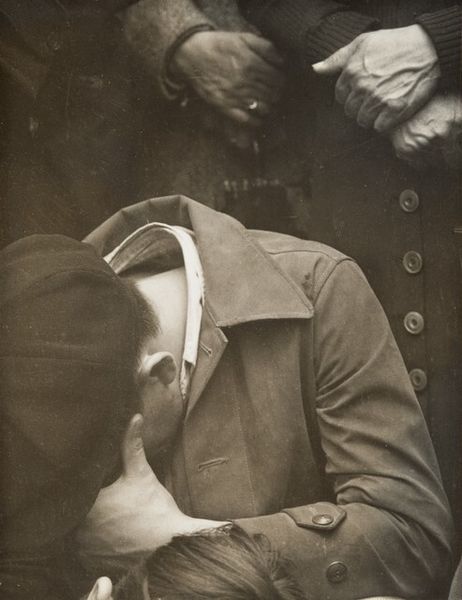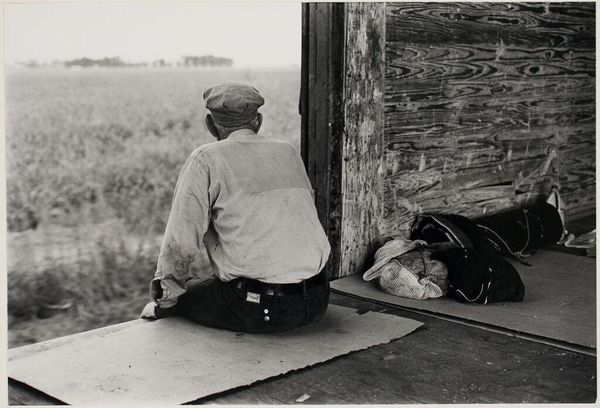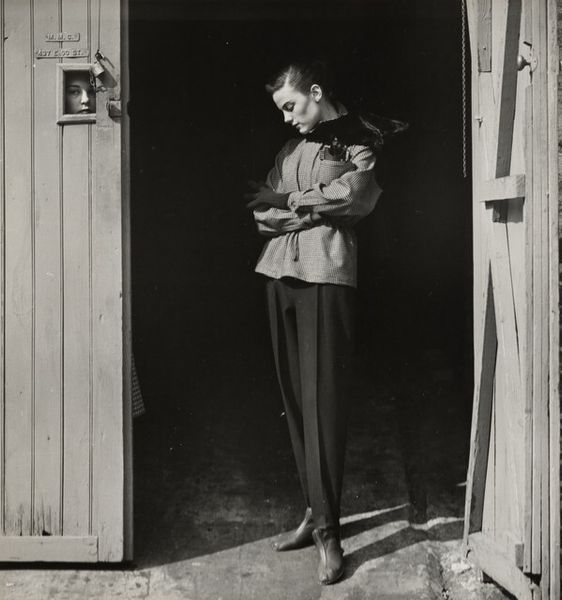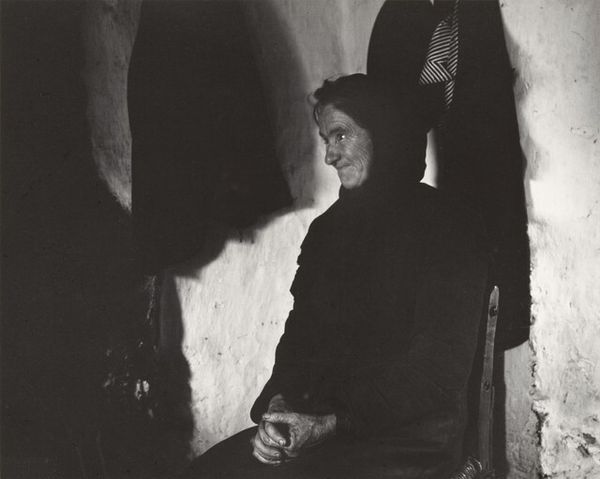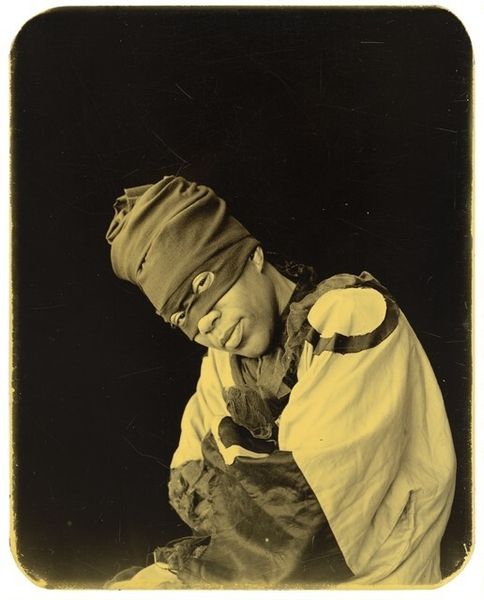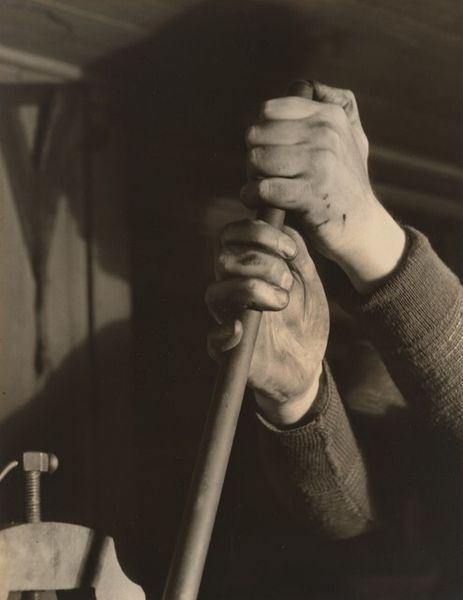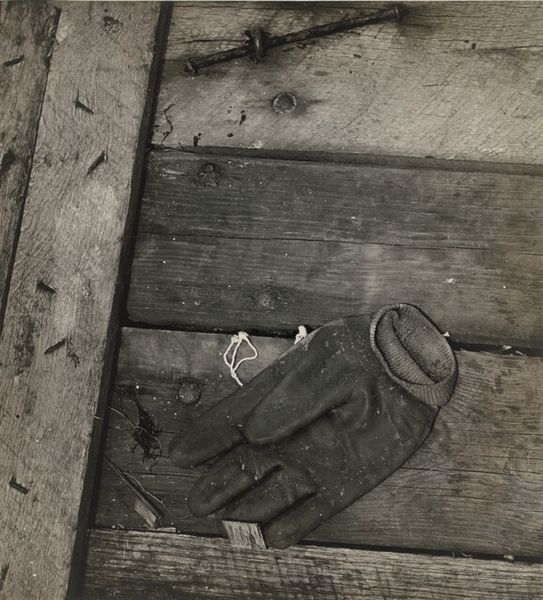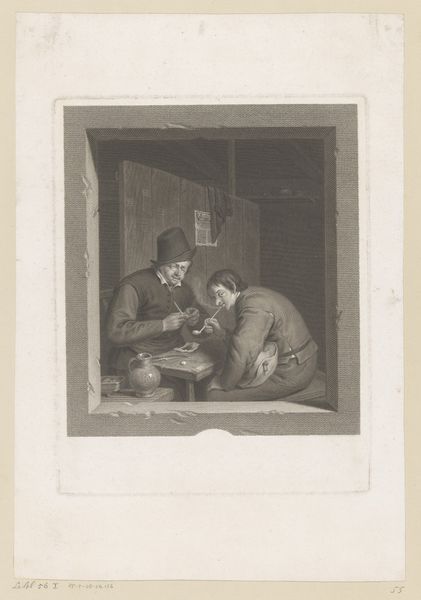
photography
#
portrait
#
german-expressionism
#
outdoor photograph
#
street-photography
#
photography
#
monochrome photography
#
realism
#
monochrome
Dimensions: sheet: 17.7 x 20.2 cm (6 15/16 x 7 15/16 in.)
Copyright: National Gallery of Art: CC0 1.0
Curator: Here we have August Sander’s “Match Seller, Cologne,” taken in 1926. It’s a striking portrait, capturing a young man in what appears to be a moment of weary resignation. Editor: Resignation, definitely. The textures tell that story – the rough stone, the worn clothes. Look at how the light catches the edges of his cap and jacket. It feels almost unbearably somber, capturing, perhaps, a fragment of Weimar-era social anxieties. Curator: Absolutely. Sander's "People of the 20th Century" project aimed to document German society, and this image shows a member of the working class in interwar Germany. Notice the very small rectangular boxes resting near his hand on his lap - his wares. It reveals the gritty reality of labor at the time, reduced to peddling simple commodities to survive. Editor: The backdrop amplifies this too. Those austere, almost classical architectural details surrounding him seem to mock his condition, right? Here’s this individual relegated to the shadows while the grand facades rise up indifferently. What narratives of inequality and disenfranchisement does that juxtaposition suggest? Curator: It raises complex questions about the value of labor. Was he making or sourcing the matches himself, or working as a reseller? And to what extent do photographs shape historical memory versus objectively capturing reality? How has time and display altered the object’s aura? Editor: Indeed. The photograph is, after all, a carefully constructed artifact in and of itself, not simply an objective window onto reality. His youth, too, juxtaposed with the palpable weight of poverty, strikes me. Curator: The stark contrast, achieved through darkroom techniques with gelatin silver prints, amplifies the scene's drama and highlights the harsh realities. The tonal range he could achieve allowed for intense depth within what might otherwise be a relatively uninteresting composition. Editor: I appreciate you contextualizing the craft in relation to its sociopolitical impact. It challenges a sanitized vision of progress. Considering Sander's other portraits, placing individuals in social categories, where do you feel this particular subject fits, considering the overarching project? Curator: “Match Seller, Cologne” serves as both a character study and a wider comment on economic struggle. It prompts a necessary consideration of the everyday individuals at risk of erasure in larger historical narratives. Editor: Right. This photograph asks us not just to look, but to consider the structures that put him in that shadowed corner, attempting to sell his meager commodities. A powerful statement about society, then and, arguably, now.
Comments
No comments
Be the first to comment and join the conversation on the ultimate creative platform.
